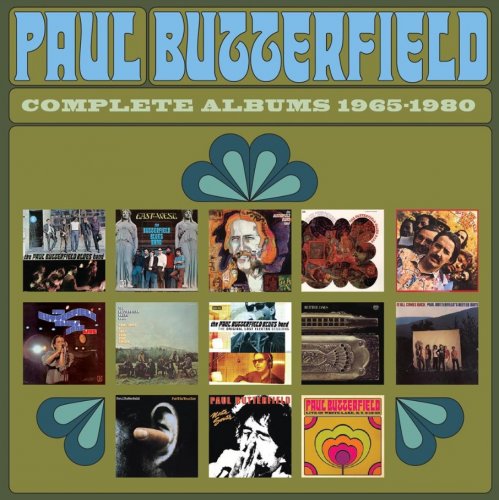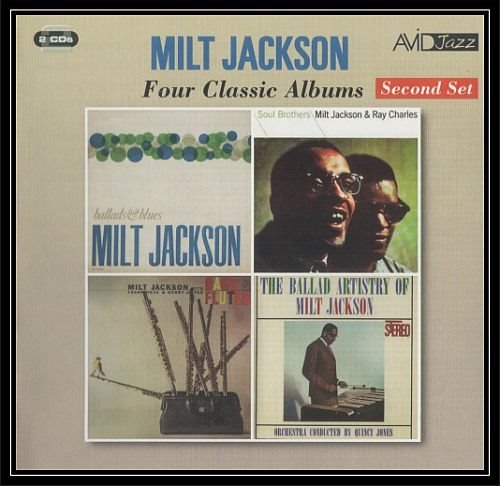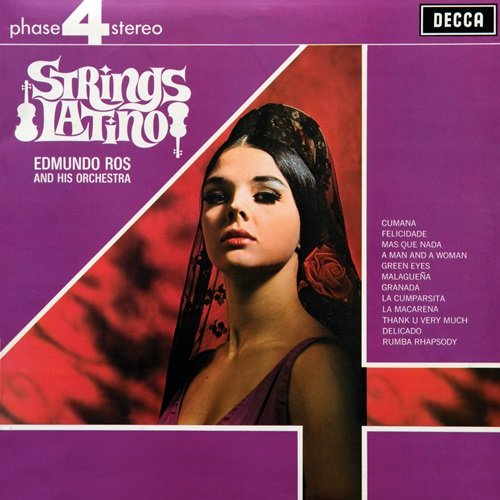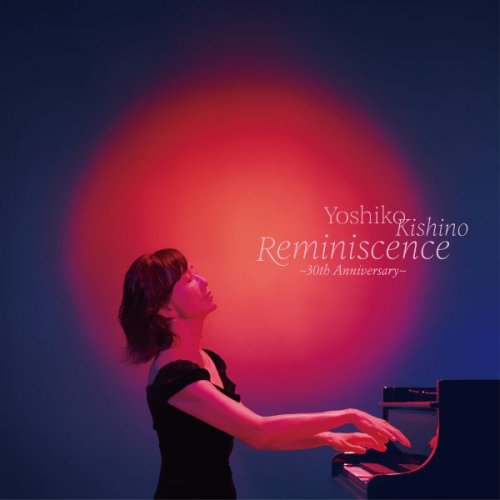Artist:
The Paul Butterfield Blues Band
Title:
Complete Albums 1965-1980
Year Of Release:
2015
Label:
Elektra Entertainment
Genre:
Chicago Blues, Blues Rock
Quality:
Flac (tracks)
Total Time: 11:09:25
Total Size: 4,2 Gb
WebSite:
Album Preview
Tracklist:CD 1:01. Born in Chicago 3:09
02. Shake Your Money-Maker 2:26
03. Blues with a Feeling 4:25
04. Thank You Mr. Poobah 4:06
05. I Got My Mojo Working 3:33
06. Mellow Down Easy 2:51
07. Screamin' 4:37
08. Our Love Is Drifting 3:34
09. Mystery Train 2:35
10. Last Night 4:19
11. Look over Yonders Wall 2:27
CD 2:01. Walkin' Blues 3:20
02. Get Out of My Life, Woman 3:15
03. I Got a Mind to Give up Living 4:59
04. All These Blues 2:21
05. Work Song 7:55
06. Mary, Mary 2:52
07. Two Trains Running 3:55
08. Never Say No 3:00
09. East-West 13:12
CD 3:01. One More Headache 3:34
02. Driftin' and Driftin' 9:09
03. Pity the Fool 6:01
04. Born Under a Bad Sign 4:10
05. Run out of Time 3:00
06. Double Trouble 5:37
07. Drivin' Wheel 5:54
08. Droppin' Out 2:17
09. Tollin' Bells 5:22
CD 4:01. Last Hope's Gone (1997 Remaster) 4:52
02. Mine to Love 4:21
03. Get Yourself Together (1997 Remaster) 4:10
04. Just to Be with You 6:12
05. Mornin' Blues (1997 Remaster) 4:59
06. Drunk Again 6:08
07. In My Own Dream (1997 Remaster) 5:47
CD 5:01. Love March (1997 Remaster) 2:58
02. No Amount of Loving 3:14
03. Morning Sunshine 2:41
04. Losing Hand 3:36
05. Walkin' by Myself (1997 Remaster) 4:31
06. Except You 3:53
07. Love Disease (1997 Remaster) 3:30
08. Where Did My Baby Go (LP Version) 4:24
09. All in a Day 2:29
10. So Far so Good 2:29
11. Buddy's Advice 3:21
12. Keep on Moving 5:03
CD 6:01. Everything Going to Be Alright (Live @ the Troubadour, Los Angeles) 10:08
02. Love Disease (Live @ the Troubadour, Los Angeles) 4:01
03. The Boxer (Live @ the Troubadour, Los Angeles) 6:39
04. No Amount of Loving (Live @ the Troubadour, Los Angeles) 5:53
05. Driftin' and Driftin' (Live @ the Troubadour, Los Angeles) 13:43
06. Intro to Musicians (Live @ the Troubadour, Los Angeles) 1:45
07. Number Nine (Live @ the Troubadour, Los Angeles) 10:11
08. I Want to Be with You (Live @ the Troubadour, Los Angeles) 3:55
09. Born Under a Bad Sign (Live @ the Troubadour, Los Angeles) 5:44
10. Get Together Again (Live @ the Troubadour, Los Angeles) 6:30
11. So Far, so Good (Live @ the Troubadour, Los Angeles) 9:18
12. Gene's Tune (Live @ the Troubadour, Los Angeles) 12:29
13. Nobody's Fault but Mine (Live @ the Troubadour, Los Angeles) 6:58
14. Losing Hand (Live @ the Troubadour, Los Angeles) 14:28
15. All in a Day (Live @ the Troubadour, Los Angeles) 8:11
16. Feel so Bad (Live @ the Troubadour, Los Angeles) 4:43
17. Except You (Live @ the Troubadour, Los Angeles) 4:51
18. You've Got to Love Her with a Feeling (Live @ the Troubadour, Los Angeles) 5:24
19. Love March (Live @ the Troubadour, Los Angeles) 12:25
CD 7:01. Play On 3:34
02. 1000 Ways 4:48
03. Pretty Woman 3:49
04. Little Piece of Dying 3:31
05. Song for Lee 3:46
06. Trainman 5:47
07. Night Child 4:27
08. Drowned in My Own Tears 5:19
09. Blind Leading the Blind (1997 Remaster) 4:02
CD 8:01. Good Morning Little School Girl 2:25
02. Just to Be with You 3:24
03. Help Me 2:17
04. Hate to See You Go 4:35
05. Poor Boy 3:27
06. Nut Popper #1 2:26
07. Everything's Gonna Be Alright 2:59
08. Lovin' Cup 2:44
09. Rock Me 2:52
10. It Hurts Me Too 2:46
11. Our Love Is Drifting 2:30
12. Take Me Back Baby 2:50
13. Mellow Down Easy 3:06
14. Ain't No Need to Go No Further 2:46
15. Love Her with a Feeling 3:00
16. Piney Brown Blues 2:15
17. Spoonful 3:20
18. That's All Right 3:14
19. Goin' Down Slow 6:02
CD 9:01. New Walkin' Blues 4:54
02. Please Send Me Someone to Love 5:08
03. Broke My Baby's Heart 5:13
04. Done a Lot of Wrong Things 3:51
05. Baby Please Don't Go 3:33
06. Buried Alive in the Blues 3:43
07. Rule the Road 4:14
08. Nobody's Fault but Mine 3:37
09. Highway 28 3:10
CD 10:01. Too Many Drivers 3:22
02. It's Getting Harder to Survive 4:02
03. If You Live 3:29
04. Win or Lose 4:39
05. Small Town Talk 5:38
06. Take Your Pleasure Where You Find It 3:44
07. Poor Boy 4:22
08. Louisiana Flood 3:42
09. It All Comes Back 6:08
CD 11:01. You Can Run but You Can't Hide 3:44
02. (If I Never Sing) My Song 2:56
03. The Animal 3:46
04. The Breadline 3:06
05. Ain't That a Lot of Love 4:06
06. I Don't Wanna Go 4:32
07. Day to Day 3:18
08. Here I Go Again 3:51
09. The Flame 3:19
10. Watch 'Em Tell a Lie 3:00
CD 12:01. I Get Excited 3:35
02. Get Some Fun in Your Life 4:00
03. Footprints on the Windshield Upside Down 3:20
04. Catch a Train 2:56
05. Bread and Butterfield 4:28
06. Living in Memphis 4:08
07. Slow Down 4:39
08. I Let It Go (To My Head) 2:55
09. Baby Blue 5:08
CD 13:01. Intro (Live in White Lake, N.Y. 1/18/69) 1:07
02. Born Under a Bad Sign (Live in White Lake, N.Y. 8/18/1969) 13:38
03. No Amount of Loving (Live in White Lake, N.Y. 1/18/69) 6:13
04. Driftin' and Driftin' (Live in White Lake, N.Y. 1/18/69) 12:08
05. Morning Sunrise (Live in White Lake, N.Y. 1/18/69) 8:01
06. All in a Day (Live in White Lake, N.Y. 1/18/69) 9:04
07. Love March (Live in White Lake, N.Y. 1/18/69) 10:07
08. Everything's Gonna Be Alright (Live in White Lake, N.Y. 1/18/69) 9:58
One of the most influential blues acts of their time, the Paul Butterfield Blues Band introduced a gritty and authentic brand of electric blues to the white rock audience, and evolved into a group that could incorporate jazz, world music, R&B, and psychedelia into their performances while staying true to their roots. The Butterfield Blues Band featured three musicians who would put a srtong, highly individual stamp on the music -- harmonica player Paul Butterfield and guitarists Mike Bloomfield and Elvin Bishop -- and the tough but fluid sound they conjured on 1965's The Paul Butterfield Blues Band and the more exploratory approach of 1966's East-West carved out a path dozens of blues-rock acts would follow in the years to come. The group would evolve into a sound more beholden to soul and contemporary R&B on 1968's In My Own Dream and 1969's Keep On Moving, though the strength of their instrumental attack and the sincerity of their vision remained unchanged.
The Paul Butterfield Blues Band came together in Chicago in the early 1960s, a blend of young while blues fans who adopted the music as their own, along with veterans of the Windy City's blues scene who gave them legitimacy as well as a rock-solid musical foundation. Paul Butterfield was born in Chicago in 1942 and grew up in the city's Hyde Park neighborhood. Butterfield displayed a talent for music at an early age, and studied classic flute with members of the Chicago Symphony Orchestra. However, he switched over to guitar when he began visiting local blues clubs, where legendary artists like Muddy Waters, Howlin' Wolf, Otis Rush, and Little Walter played on a regular basis. Butterfield stood out as one of the very few white patrons at most of these shows, but the musicians were friendly to their new and loyal fan, and let him sit in with them on occasion. Butterfield crossed paths with another young blues fan, Nick Gravenites, and they began playing local coffeehouses as Nick & Paul. Meanwhile, another young white blues obsessive and aspiring guitarist, Elvin Bishop, had left Oklahoma to attend the University of Chicago after winning a National Merit Scholars prize in high school. Hoping to witness the music he loved up close and in person, Bishop was surprised to hear Butterfield playing solid Chicago-style guitar while sitting on the front stoop of his apartment building only blocks from Bishop's new digs. Butterfield and Bishop became fast friends, and Butterfield took Bishop along as he made the rounds of blues bars. Before long, the two were playing music together, and Butterfield set aside the guitar in favor of harmonica, developing a serious proficiency on the instrument in a matter of months. By 1961, they were playing out regularly, and when they were offered a steady gig at a folk club on the near North side, they felt they needed to beef up their sound. Bassist Jerome Arnold and drummer Sam Lay were one of the strongest rhythm sections on the Chicago blues circuit, well known for their work with Howlin' Wolf. Arnold and Lay, who had gotten to know Butterfield and Bishop, agreed to join the group, and by 1964 the Paul Butterfield Blues Band was making a name for itself.
A few months into its existence, the band was introduced to Mike Bloomfield, who was born in 1943 into a wealthy Chicago family, Bloomfield was captivated by the blues just like Butterfield and Bishop, and like them he sought out the iconic artists who'd put his hometown's music on the map. Bloomfield became an exceptionally good guitarist with the coaching of Luther "Guitar Junior" Johnson, Sleepy John Estes, and Little Brother Montgomery, going on to play in their groups. Bloomfield was persuaded to join the Butterfield band, and Bloomfield and Bishop soon became a guitar duo to be reckoned with. The initial lineup was complete with the addition of organ player Mark Naftalin, and as the band became the talk of Chicago, producer Paul A. Rothchild stepped in and helped them land a recording contract with Elektra Records. Issued in 1965, the group's debut LP, The Paul Butterfield Blues Band, was considered a revelation on first release, bridging the gap between authentic electric blues and the increasing sophistication in rock & roll, as well as presenting a racially integrated lineup at a time when Black and white music were increasingly influencing one another, even as Civil Rights was a hot-button issue in America. The album received enthusiastic press and sold well, and the band toured extensively, including an appearance at the 1965 Newport Folk Festival. One of their admirers, Bob Dylan, asked members of the group to back him during his set, and they became part of the famous night when Dylan scandalized his fans by going electric.
In 1966, the Paul Butterfield Blues Band brought out their second album, East-West, a significantly more ambitious work that folded jazz, raga, and psychedelic influences into their extended jams (in particular the title track) along with the razor-sharp blues that was their trademark. The album also introduced drummer Billy Davenport, who signed on after the departure of Sam Lay, who left due to health problems. East-West proved to be wildly influential as the blues-rock community grew by their example, but the success of the band fueled the ambitions of some of the individual members, and Bloomfield quit to form his own group, the Electric Flag. Butterfield's third album, 1967's The Resurrection of Pigboy Crabshaw, got its title from Elvin Bishop's nickname, as he took over lead guitar duties on the sessions. The LP also introduced a new rhythm section, bassist Bugsy Maugh and drummer Phillip Wilson, and featured a three-piece horn section, Gene Dinwiddie (tenor sax), Keith Johnson (trumpet), and David Sanborn (alto sax). Despite the changes, the album was a commercial success, rising to number 52 on the album charts, and the group was featured at that year's Monterey Pop Festival, one of the first and most influential major rock festivals of the psychedelic era.
The Butterfield Blues Band were moving away from purist's blues into a sound more influenced by soul and R&B when they made their fourth album, 1968's In My Own Dream, with Mark Naftalin (credited as "Naffy Markham") joined on keyboards by Al Kooper. The album didn't fare as well on the charts as The Resurrection of Pigboy Crabshaw, and by the time the group entered the studio to record their fifth LP, 1969's Keep On Moving, Butterfield was the only original member left in the band, with producer Jerry Ragovoy guiding the music toward a more commercially friendly sound. Tenor sax player Gene Dinwiddie also handled guitar and keyboards, Howard "Buzz" Feiten tackled guitar and organ, Rod Hicks played bass as well as cello, Phillip Wilson was still on drums, and various session players filled out the arrangements. The album didn't sell especially well, though the Butterfield Blues Band had a very memorable gig in the summer of 1969, performing at the Woodstock Music & Art Fair. Their set wasn't featured in the successful feature film documenting the festival, but "Love March" did appear on the Woodstock album released in 1970. A two-night stand at the West Hollywood club the Troubadour was recorded for the 1970 double-album Live.
An eclectic variety of group stalwarts, session players, and friends gathered to record 1971's Sometimes I Just Feel Like Smilin'. It proved to be the final Paul Butterfield Blues Band album; Butterfield retired the group and signed with Bearsville Records to launch his new group, Better Days. After two albums, Better Days also folded, and Butterfield recorded as a solo artist and a sideman in a career that was followed by blues fans but had fallen outside mainstream visibility. Paul Butterfield died on May 4, 1987 in North Hollywood, California; he was 44 years old. After his passing, a variety of archival releases from the Butterfield Blues Band appeared, including studio outtakes (1995's The Original Lost Elektra Sessions), early live material (2018's Born in Chicago: Live 1966), and the group's complete Woodstock performance (2020's Live at Woodstock). Mike Bloomfield died on February 15, 1981 at the age of 37, with other important members of the group passing in the years that followed. Drummer Phillip Wilson, who also performed with the Art Ensemble of Chicago, died on March 25, 1992 at the age of 50. Billy Davenport retired from music in 1981, and died on December 24, 1999 at the age of 68. Gene Dinwiddie focused on studio work before his death on January 11, 2002 at the age of 65. Bugsy Maugh cut a pair of solo albums, appeared on Todd Rundgren's 1972 album Something/Anything?, and played in a variety of blues groups; he died on July 2, 2015 at the age of 73. Drummer Sam Lay continued to be a fixture on the Chicago blues circuit for decades. He died on January 29, 2022 at the age of 86.


![Lee Ritenour - On The Line (1983) [Hi-Res] Lee Ritenour - On The Line (1983) [Hi-Res]](https://www.dibpic.com/uploads/posts/2025-09/1759221587_cover.jpg)

![Sadao Watanabe - Sadao 2019 (Live at Blue Note Tokyo) (2019) [Hi-Res] Sadao Watanabe - Sadao 2019 (Live at Blue Note Tokyo) (2019) [Hi-Res]](https://www.dibpic.com/uploads/posts/2025-09/1759200094_vn3exkxruetdb_600.jpg)

![Corridor Bassoon Quartet - Born of The Day (2024) [Hi-Res] Corridor Bassoon Quartet - Born of The Day (2024) [Hi-Res]](https://img.israbox.com/img/2025-10/01/q9lv927oiyrmu06h15a9dgby4.jpg)


![Jim Gannon - Gannon's Back in Town (2025) [Hi-Res] Jim Gannon - Gannon's Back in Town (2025) [Hi-Res]](https://www.dibpic.com/uploads/posts/2025-10/1759472331_a0171866364_10.jpg)
